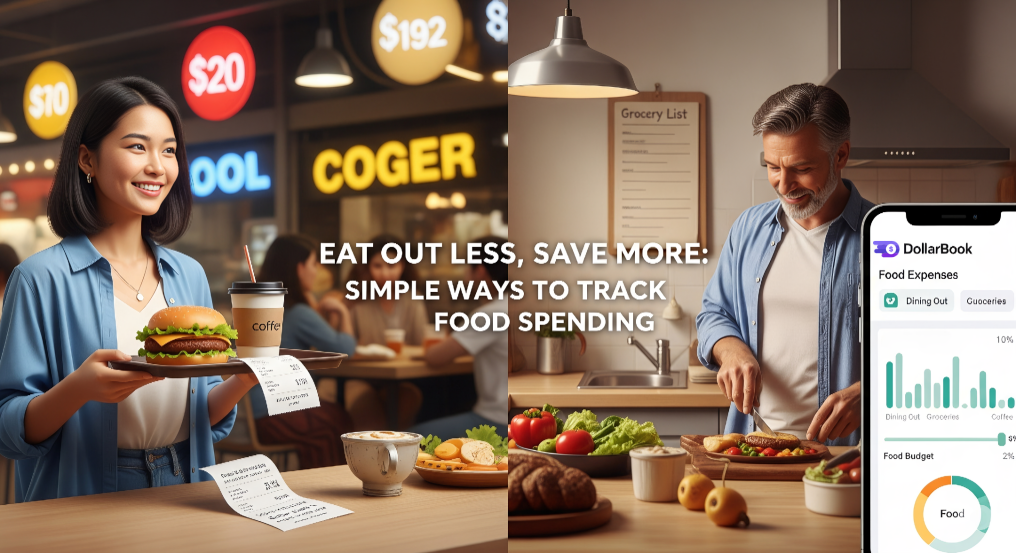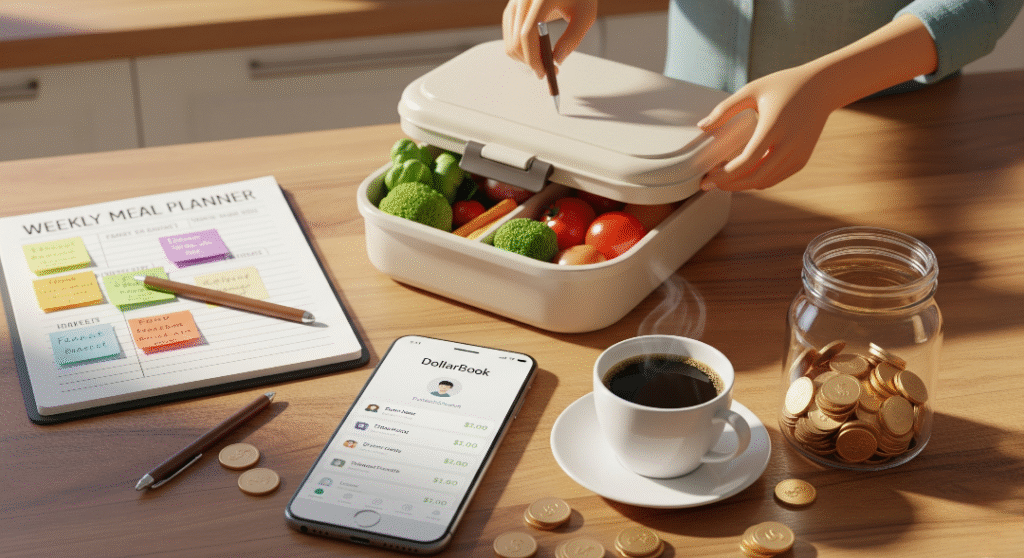Eat Out Less, Save More: Simple Steps to Master Your Food Spending

The enticing scent of coffee, fresh from your beloved local cafe. The ease of a quick takeaway lunch after a long day. The special moments of dining out with cherished people. Eating out is an enjoyable aspect of modern living. However, for many of us, this ordinary pleasure is often accompanied by a sense of dread. That feeling occurs when we examine our bank statements and learn that a considerable portion of our hard-earned money has been spent on food.
This is a common story. Food spending, particularly when dining out, may quickly become out of control. It frequently becomes a silent budget breaker. But what if you could eat well at home and out without feeling guilty about the cost? The good news is: you can. By just understanding where your money flows, you acquire the ability to make better decisions. You may significantly improve your savings by using this technique.
The Secret Costs of Convenience
Why does food cost so much, especially when you’re on the go? It’s usually because of the sheer frequency. Unlike a monthly rent payment or a utility bill, food expenses can occur multiple times each day. Each purchase may appear insignificant – a $1.20 coffee here, a $3.00 snack there, a $6.00 lunch. However, these tiny sums quickly amass. Before you know it, these regular habits accumulate to a large sum.
Beyond the data, there is also an emotional component. Eating out is generally associated with convenience, comfort, or celebration. It’s a natural response when you’re fatigued or stressed. This makes it difficult to resist. Most consumers just do not have a clear understanding of their total monthly food spend. This lack of awareness is a significant barrier. When they eventually do the math, the results might be rather shocking.
The Foundation: Why Tracking Matters
Financial freedom starts with clarity on your spending. It is not necessary to impose stringent boundaries when tracking your expenses. Instead, it is about obtaining a thorough understanding of your habits. With this understanding, you can make smart choices and build a solid budget. You cannot properly set a food budget until you fully understand your present spending habits.
Tracking shows more than simply totals. This makes it simpler to recognize certain spending behaviors. Are you overspending on everyday lattes? Do Saturday brunches deplete your finances? Is takeaway your main culprit? Once you’ve identified these patterns, you can handle them immediately. This clarity is critical for accomplishing larger financial objectives. Every monitored rupee puts you closer to your goal, whether it’s a dream vacation, a down payment on a property, or an emergency fund. This is the first stage in developing effective money management techniques.
Simple Strategies to Start Tracking Your Food Spending
Are you ready to take control? There are various simple ways to begin tracking your food spending immediately. Determine the option most compatible with your lifestyle. Consistency is important to success.
The Clear and Classical Pen and Paper Method:
- This is the simplest method to start. Carry a tiny notebook or set aside a page in your diary.
- Every time you spend money on food, whether it’s shopping, a snack, or dining out, write it down right away.
- Include the date, item, and price. At the end of the day or week, swiftly total your expenses.
- Pros: Extremely simple, no technology necessary. Offers an instant, physical record.
- Cons: It’s easy to forget to log entries. Manual summing can be tiresome.
Spreadsheet Savvy (For the Digitally Organized):
- If you’re comfortable with computers, a simple spreadsheet can be a useful tool.
- Create columns for “Date,” “Item/Description,” “Cost,” and “Category” (for example, groceries, dining out, or coffee).
- Update it on a regular basis, possibly once a day or every few days.
- Pros: Provides freedom for customisation. Simple to add totals and perform simple analysis.
- Cons: Requires discipline to keep entries. Can be less “on-the-go” than other ways.
Leveraging Your Banking Apps and Statements:
- Most current banking apps allow you to easily review recent transactions.
- Regularly monitor your bank and credit card statements. Many banks automatically categorize spending, but you can also do it manually.
- Pros: Transactions have already been recorded for you. Once the expenditure is completed, there will be less manual entering.
- Cons: The categories can be overly wide. It is not real-time tracking because it only shows prior spending. It does not capture monetary transactions.
Efficiency of Dedicated Expense Tracking Apps:
- For a more streamlined and thorough approach, dedicated cost tracker app solutions are extremely useful.
- These apps are specifically designed to track income and expenses. They frequently provide quick data entry, automatic categorization, and extensive reports. They make financial tracking easier.
- Pros: Real-time updates, clear visual reports, budgeting tools, and frequent reminders. Many provide secure cloud synchronization.
- Cons: Requires downloading and basic setup. Finding the best expense tracking app for your needs is critical.

Beyond tracking: actionable steps to reduce food spending
Tracking is the first step; what happens next? Once you’ve identified your tendencies, you may use clever techniques to reduce back without feeling deprived.
Embrace Meal Planning: This is a game changer. Plan out your meals for the week. This covers breakfast, lunch, and supper. Plan your meals, then list your groceries. This simple technique significantly minimizes impulse purchases at the supermarket. It also reduces last-minute takeout orders.
Cook More At Home: Homemade meals are almost usually less expensive and healthier than restaurant food. Set aside time each week to cook. You can even batch cook larger servings for handy leftovers. This guarantees that you always have a cost-effective choice available.
Pack your lunch: A modest yet powerful habit. Bringing lunch from home saves a substantial sum over the course of a month. It keeps you away from the temptations of high-end cafes and restaurants near your workplace. Even once or twice a week makes a difference.
Shop Smart: Stick to your grocery list. You’re more prone to impulse buys if you shop hungry. Search for sales and discounts. Consider buying non-perishables in bulk. These activities are excellent money-management strategies.
The “Coffee Challenge”: If you visit a coffee shop every day, calculate how much you spend in a month. It is often startling. Try preparing coffee at home a few times per week. This minor modification can result in significant savings.
Don’t let leftovers go to waste. Get creative! Repurpose them as new meals for the next day. This approach both saves money and minimizes food waste.
Reap the Rewards
Taking control of your food spending entails more than simply balancing a budget. It is about developing a strong feeling of financial control. It’s about matching your spending to your ideals and ambitions. Simply being aware of where your money goes can lead to considerable savings. These funds can then be used towards what is actually important to you.
Imagine the freedom that comes from knowing your finances are in order. Imagine reaching your long-term financial goals. You may get started by using simple tracking tools and making mindful decisions. If you’re searching for a simple free budgeting application to make this process even easier, check out DollarBook. It’s a money manager application that simplifies spending monitoring and allows you to view your financial path, bringing your savings objectives closer to reality.
